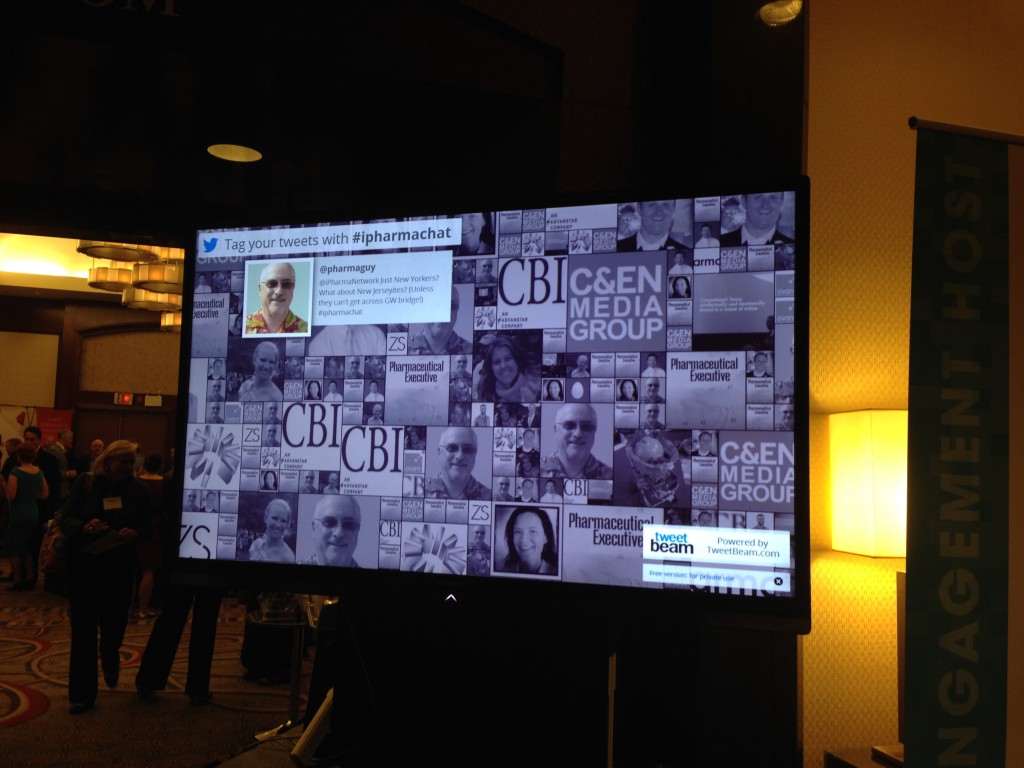Life science marketing professionals gathered in New York City recently for the CBI iPharma Marketing Innovation Summit to discuss the latest marketing trends in the pharmaceutical industry. A variety of panelists presented, including executives from Merck, Biogen Idec, agencies like HubSpot and Intouch Solutions, and speakers from other industries. As digital marketers at the ACS Media Group, we attended sessions in the “Effective Multi-Channel Marketing Strategies” track to learn more about the trends in pharma today.
First, internal culture was discussed a lot.
Bill Capodagli, the best-selling author of Innovate the Pixar Way, used Pixar as a case study of a company doing it right – they give their employees creative outlets, which in turn, has created hit after hit at the box office. They formed a playground to suit their culture best: employees ride around on scooters and go about their day “looking through the eyes of a child”, to remind them of the (little) people not to forget. His advice to pharma attendees was to create your own version of that corporate playground. To demonstrate this importance of company culture, Capodagli cited a Booz Allen study: after analyzing environments at the world’s top companies, they concluded that culture was the most important element in a company’s success over any other. Companies who prioritized this element saw 9% higher revenues and 22% higher earnings. What we found particularly applicable was what Bill included in his definition of good culture: strong identification with the customer, which brings us to the next theme.
Really, truly focus on your customer.
What’s the story you’re trying to tell them, and further, how can you utilize them to carry your message? Capodagli added you shouldn’t just meet your customers’ expectations, but define and redefine them. As a marketer, you should know where your customers are going before they do, but pharma often seems too afraid to break new ground. One panelist took issue with this during the Value Proposition of Digital Engagements panel, saying if you’re worried about the regulatory and legal aspects, guess what? Your patients aren’t! She then pointed out the silver lining: if your customers have forged ahead without you, that means there will be existing communities for you to find. Listen to them. (Just be careful, she advised – you have to make sure forum administrators and participants are receptive. You also shouldn’t be delivering a marketing message to them. You’re going for customer support and listening; that’s it.)
The power of storytelling
Storytelling over selling was another recurring discussion as well. We like how simple the statement is, without really saying that much. It gets at content, the customer, image, and really, how to be human.
“Be human. You wouldn’t walk into a room and scream “Hey! Buy my drug! That’s rude and ineffective” – Alexis Ohanian, co-founder of Reddit, Hipmunk
Marty Kovach, Global Creative Lead at the Creative Strategy Group within Merck, presented this idea in his keynote. He advised, “Think of stories that will give someone a better tomorrow than today, because it’s no longer health our way, where we want people to gobble up whatever we put in front of them, but it’s their way.” You’ll hear it across all industries: the internet has given the consumer more power now than ever, and traditional selling has simply become distrusted. (Just look at how crazy we think the ads of the Mad Men era are.) Lundbeck, a company often in the rare disease space, put ‘storytelling over selling’ to practice by focusing on authentic content, which they decided should be developed by caregivers. One, they know their space well enough not to look to the patient, but to those taking care of them, and two, their emphasis is on providing real value to those individuals.
The digital space is still certainly a challenge for pharma.
For one, there are detractors on social media to deal with, and attendees continually asked how to handle the issue. [Fun fact: we learned negative comments resonate with a person 150 times more than positive ones.] Some panelists responded by saying you just can’t let them get to you. Others inferred the focus on these social media issues is misplaced – it’s just an excuse holding you back. Shona Davies of Univadis pointed out that there are so many tools to track adverse events now, reporting is actually easier than it’s ever been. “That’s the inherent beauty of digital,” she said. So why is it still a crutch?
In another session, EMD Serono shared how they dealt with the challenge: for their social listening project, they handled adverse event reporting by conducting training with their hired agencies, and even got specific in their contracts. We also heard continually to get your compliance and regulatory folks on board from the get-go with campaigns, and they’re really willing to help! Dan Tyre from Hubspot commented that this advice is a drastic shift from the conversation that happened at last year’s iPharma conference, which is a positive sign for the internal maneuverings of pharma marketing.

Final thoughts
Overall, there was a mixture of apprehension and excitement for pharma marketing among panelists and attendees. But Alexis Ohanian of Reddit fame told us to look to the digital landscape in science today [while also managing to share some entertaining cat photos. Would you expect anything less from an internet start-up entrepreneur?]. There’s evidence right here online that this a great time for science. Sites like Science Exchange, a marketplace for lab rentals, Comprehend, which provides data on clinical trials, or the new crowdfunding opportunities provided by Experiment or Poliwogg – are all exciting new avenues that didn’t exist before, and are both connecting researchers and scientists, and getting the rest of the world engaged. That should give pharma marketers fuel, resources, and optimism for finding a place and audience for their messages.
We hope this provided a decent overview of what fellow marketers are discussing in the pharma marketing world. Congrats to the CBI team for putting on an excellent event!


















